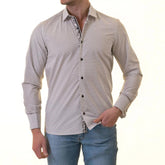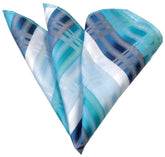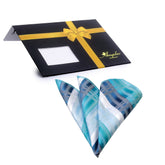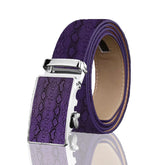The Ultimate Guide to Custom Tailored Suits
A good custom-tailored suit is an investment and should be approached as such. Knowing the do’s and don’ts beforehand can save you time and money when you’re at the tailors.
Bespoke or Made-to-Measure? Know the Difference.
Bespoke is a word that gets thrown around all too often in the custom-tailoring world, so much so that some tailors (see: Saville Row Bespoke Association) have called for regulation of the term. Traditional bespoke tailoring consists almost entirely of hand-worked fabric and requires several fittings throughout the process. This is in contrast to made-to-measure, in which the measurements are taken beforehand, and then the suit is constructed according to those specifications, with very few or no fitting sessions. Most made-to-measure suit vendors will offer a pre-determined dollar value of alterations if they are needed once the suit is finished.
A good tailor will typically charge upwards of $1500 for a quality bespoke suit, while made-to-measure can cost as little as a few hundred dollars.
Be Honest About Your Body Type.
Whether you’re 6’5″ or 5’6″, have the body of a professional athlete or that of King Henry VII, a well-tailored suit can only make you look better. Be sure to know the specifics of dressing for your body type, as different proportions require different sartorial dimensions to properly accentuate a frame. Larger gentlemen often make the mistake of buying even larger suits, so as to hide their bulk under a pile of fabric. Extra and unnecessary fabric not only costs more, but gives the appearance of a sloppy dresser. Leave your insecurities at the door, and go for a fit that hugs your body. Thinks like wearing a pocket square to draw attention away from your gut, and always leaving your jacket done up (unless sitting of course), will keep you looking your sharpest.
Don’t Take Your Own Measurements.
Play it safe. Get a tailor to take your measurements for you (they usually charge around ten dollars), and while you’re there. . .
Talk To Your Tailor!
When a tailor hands you a list of your measurements, it won’t be the blueprints to build an anatomically correct statue of yourself; it will be the specifications for a garment of some sort. This is why it’s important to have a conversation with your tailor about what kind of fit you want the suit to have. You may decide that showing the standard half-inch of shirt cuff visually lengthens your already considerably long arms, and that maybe a quarter-inch would be more appropriate. Maybe you’re going to stick to your New Year’s resolution and put an extra few inches on your biceps at the gym, and want the tailor to leave room for them in the arms of the jacket.
Good tailors will ask you the right questions about the fit of your suit, and the most experienced ones won’t need to. In any case, make the effort to have a dialogue with your tailor when you’re getting measured, as the measurements are the most important part of any suit-tailoring process.
Get a Suit That You’ll Actually Wear.
You’ve had your measurements taken (by a tailor hopefully). You’ve picked a sensible style, and a classic fabric color, but you’re worried that you may be missing an opportunity to get something truly special made. The salesman did say they could do whatever you want, right? Maybe some velvet trim or some pronounced chalk-striping? You see everyone around you wearing two-button jackets, maybe you should be different and go for three, or even four?
This line of thinking is common when guys get a suit tailored for the first time. They have a few suits that they’ve bought off the rack already and want to do something different with their custom-made experience. A good vendor will have hundreds, if not thousands of fabrics to choose from. Not to mention a wide array of style choices to be made regarding lapels, vents, buttons, etc. Take a minute to think about what occasions you’ll want to wear the suit in and make your sartorial decisions accordingly. Remember, it’s the near-perfect fit of custom-tailoring that makes you stand out, not the wool-trim on your lapels. But that doesn’t mean you shouldn’t take advantage of having a suit made specifically for you.
Don’t Forget the Extras
Surgeon’s cuffs? Ticket pockets? Natural Shoulders? It’s the little things that make a custom-tailored suit truly yours, so don’t miss the opportunity to eschew some of the traditional off-the-rack conventions that plague modern menswear outlets. Surgeon’s cuffs allow the buttons on the jacket sleeve to be undone. The waist or “ticket” pocket (so named for the train tickets that turn of the century English gentlemen would store in it) has come full circle and is seen on many modern designs. Natural shoulders are a must for any athletically built man — you don’t need shoulder pads doing the work of shaping your suit when your own shoulders can do it for you.
Personally, I always go for the surgeon’s cuffs and have yet to hear a convincing argument against them. They’re a distinct watermark of custom-tailoring, and while lesser-suited men are wasting valuable seconds finding a place to hang their jackets, you’re there at attention, with rolled-up jacket sleeves, ready to deliver that baby.
Why not make it a 3-piece?
It’s always a good idea to get a vest made with your suit. It usually doesn’t cost much extra, and 3-piece suits are coming back in a big way (although you can easily ditch the vest and wear just the jacket and pants). In addition to the “better to have it and not need it” mentally, it’s important to note that when everyone else at the office has taken their jackets off by mid-day, it’s the man in the vest who’s still wearing a suit.
Buying a custom-tailored suit involves more than just walking in a store and picking a fabric. Know your fit and the basic styles ahead of time, and you can’t go wrong.
This article first appeared on and is republished with permission from Shave Magazine. Shave is the premier source of useful advice and information for men to live a well-balanced life.






